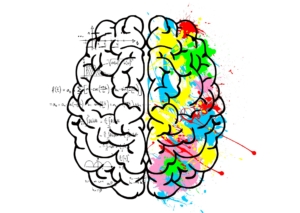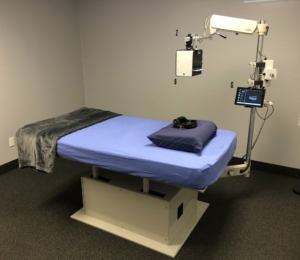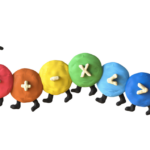The Missing Piece for You / Your Child?
Are Your Sensory Systems Overwhelmed & Underperforming?

A Bit About Our Sensory Systems
For many of us, we take for granted the efficiency at which our brains can process sensory information and then create appropriate action. What is action? Action is cognitive output, or behavior, or movement, in whatever form is necessary for that given situation. You will commonly hear of sensory processing as it pertains to learning through vision, hearing/audition, body awareness/movement, touch/tactile, taste/smell, and internal body sensation (interoception).
We have learned to do what is called multi-sensory processing. This refers to the ability to filter, modulate, and integrate the multiple senses our brain receives from the environment so that we can pay attention to what is important and ignore what isn’t. In order for a child to move through the developmental stages of learning, there must be efficient multi-sensory filtering/processing. If a child possesses neurologically immature abilities in multi-sensory processing, it will limit their perception of their physical world and will likely result in that child becoming uncertain or fearful of most sensory information. This will undoubtedly lead to a struggle with learning. This child won’t understand the world the way you or I may. Imagine not being able to accurately judge where someone or something is in space, where your body ends and another’s begins or how to estimate the amount of time it would take and the amount of space to get from one point to another. The greater the disparity of one’s perception of their sensory world from physical reality, the greater one’s level of inappropriate behavior displayed. This is like a road block, or a traffic jam in a child’s brain.
A Neurological Roadblock
Keeping with the analogy of a road block – our neurological networks can be seen as roadways to different destinations. Our eyes take in a massive amount of information and spread it to many neurological networks throughout the brain. This allows us to make sense of what we see, where we see it and how to interact with it. Our ears also take in a tremendous amount of information and move it onward to the auditory centers of the brain. Our brain’s sense of balance and spatial awareness also plays an extremely large role in one’s ability to effectively engage in their environment. If any one of these three modes of sensory processing is deficient, this can make a child feel very uncomfortable in their environment. If the child is uncomfortable in their environment, the potential for emotional and behavioral problems is greatly increased.
Many behaviors that seem like emotional and/or social issues can oftentimes be rooted in multi-sensory processing issues. So what can be done?
The Benefits of Optometric Multi-Sensory Training (OMST)?
Most therapies such as occupational, physical, speech, vision, behavioral and movement (motor reflex) therapy have a particular aspect in common. You might say “They are all wonderfully helpful for a child with sensory processing issues”. You would be correct, but there’s a different component involved.
One common component of traditional therapies is that most therapeutic activities will require great amounts of cortical processing. The next question on your mind should be “What is cortical processing?” Cortical processing is the activating of the higher-level areas of the brain during certain activities or actions. It often involves areas of the brain that are the destination of the neurological network (end of the road, in our analogy) to make some action occur.
Many children that are gifted have a tremendous ability to engage the upper levels of the brain, but at the expense of fatigue and exhaustion. These actions that involve high level cortical processing, require more cognitive effort and concentration. Without proper multi-sensory processing, the higher levels of the brain will be continuously working which can result in sensory overload and lead to frustration, emotional issues, as well as avoidance behavior and poor overall cognitive functioning. Take for instance the first time you drove a car. During that first time, you were likely white-knuckling the steering wheel, sweating, and barely able to listen, or make sense of anything else. In this instance, your areas of higher level cortical processing were being used to simply hold concentration on the task to prevent an unwanted accident. Now imagine if that is how you felt every time you drove. What changed in the process of you driving? As your brain developed more proficiency in the task of driving, you were able to move many of those cognitive actions down to a lower level of processing – into a sort of autopilot mode. This area of the brain consists of subcortical regions. This then freed up the higher cognitive areas for other tasks. OMST is a unique intervention in that it is able to work at the level of improving sub-cortical processing like nothing else.
Subcortical processing, when working properly, occurs under the radar ensuring the foundational aspects of an activity are operating in autopilot as they should. Many subcortical areas of the brain act as “hubs” for various networks. When these networks begin to communicate efficiently, a child becomes calmer and better able to appropriately engage in various tasks.

Here are a few of the potential benefits of OMST:
Improvements in:
- Visual skills (eye teaming & eye tracking)
- Understanding instructions and express thou
ghts more easily and automatically - Memory and organization
- Planning and judgment
- Balance and motor control
- Ability to regulate one’s emotions and behaviors
- Ability to respond to sensory environments without being overwhelmed or confused and attend to what is important and disregard what is not
- Quality of sleep
OMST can have a profound effect and can result in truly life changing outcomes. My office has been blessed to see many patients experience wonderful changes following our multi-sensory program.
Hannah’s Story
Hannah was one of those patients who experienced life changing results. She came to us as a 9th grader struggling in a number of areas. She was experiencing double vision during nearly all reading and computer tasks, and had extremely poor peripheral vision which, according to her mother, contributed to her anxiety. She was one of those individuals that experienced double vision for quite some time, and never expressed any concern because she thought that was how everyone else sees. She completed the multi-sensory program along with vision therapy and did wonderfully. She no longer has double vision. Her peripheral vision allows her to efficiently interact in her environment. Her mom shared with us “Hannah went to volleyball tryouts today and was AMAZED at how much more she could see in her drills. Things that were challenging last year were easy. So impressed!!!”
Below you will see her before & after results of her field of vision.
Before (very constricted tunnel vision resulting in reduced visual information processing)
After OMST (significantly improved field of vision allowing for more visual sensory information)
Angela’s Story
Angela (and her mother) were two more individuals with wonderful stories following OMST. Angela was a 4th grader and was first involved in our Vision Therapy program and did wonderful, but according to her mother still struggled with anxiety. Angela’s mother said “she would frequently have anxiety attacks one to three times a day during the course of a school day that would completely derail her learning. It would usually take at least half an hour to calm down and be able to return to work. Since OMST, she has had no anxiety/panic attacks! It has made a life changing difference.”
Charlie’s Story
Charlie presented to us as a precocious 5 year old boy with visual processing difficulties as well as trouble with sensory processing and impulsivity. Charlie tested in the gifted range and had difficulty in regulating much of what his brain was attempting to process. He completed his OMST program resulting in a number of behavior changes that took weeks to regulate and re-establish more proficiently. Charlie is a prime example of a gifted kiddo who developed many coping mechanisms throughout his life that left his sensory system exhausted and uncertain. OMST deconstructs and rebuilds those sensory systems.
As neuro-developmental optometrist Dr. Steve Curtis states, “It (OMST) spreads the therapeutic effect amongst several sensory systems creating opportunity for the stronger systems to support the weaker systems until all reach the balanced and synergistic status…”
Following OMST, Charlie was able to sit through an hour-long piano recital and was quiet, attentive, and polite. His family said “there was no way he could have done that two months before.” Charlie previously struggled with impulsivity and now according to his mom has “much better impulse control and a higher ability to regulate his emotions.” He has a longer attention span with more regulated behavior, is more calm, focused, and able to follow directions. Charlie also experienced benefits in physical coordination in that he is now able to throw and catch a ball with ease. He has improved balance, and also can do physical activity longer. Prior to the OMST program, he would get very bored and uninterested with activities like tag, playing catch, gymnastics, etc. Now he is able to participate in hour-long gymnastics classes, football games, baseball games, and general outdoor play at home, without losing interest.

OMST is truly unique in its ability to treat and improve the areas of the brain responsible for sensory processing at the foundational level. When these brain pathways become automatic, it frees up the higher level processing areas of the brain so a child can dedicate more cognitive resources to tasks that involve thinking and learning.
To inquire about OMST at Nebraska Visual Integration Center, contact us at https://www.visualintegrationcenter.com/contact/


